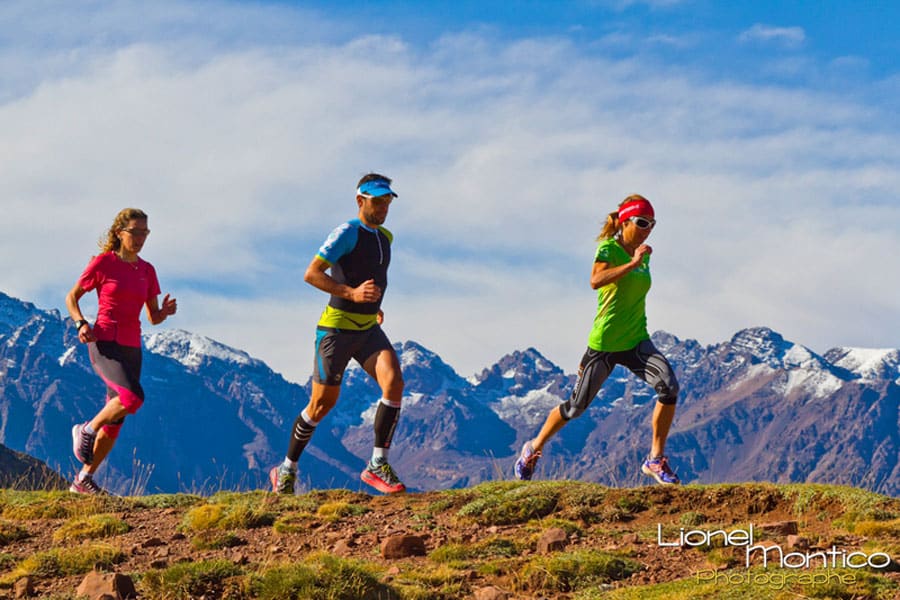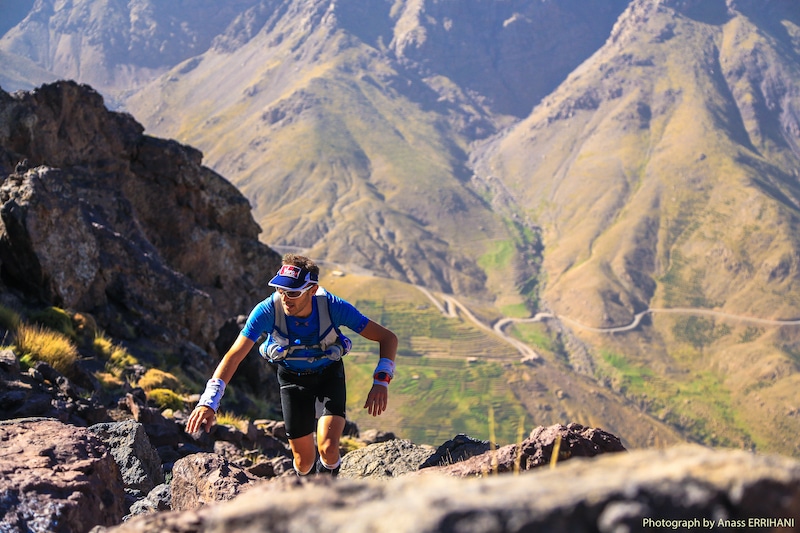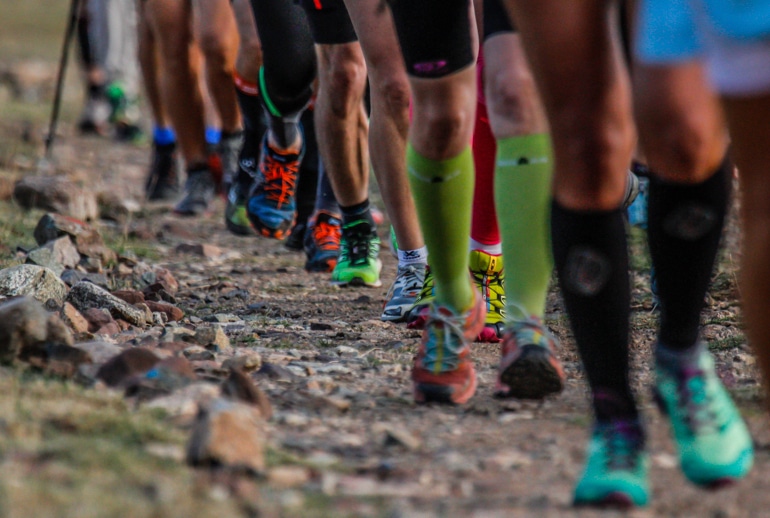Acclimatize to efforts in high temperature
Man is a homeothermic living being, this means he must maintain a constant central temperature. To do so, it is essential that the addition of the heat produced, and the heat captured in the environment equals the heat losses. The heat a body produces is called endogenous heat.
This heat is produced by:
- On the one hand, the basic metabolism, meaning the energy used by a body at rest to function : lungs, heart, digestion…
- On the other, muscles contracting when making an effort
Exogenous heat corresponds to the exchange of heat with your environment, including both heat gains and losses. This exchange is possible thanks to four different mechanisms:
- convection
- conduction
- radiation
- evaporation
These heat exchanges happens only when there is a difference in temperature between the body and the environment: it is what we call gradient.
The convention enables both gain and loss of heat. The heat exchange takes place in contact with the air.
If the air temperature is lower than the skin temperature, a gradient between the two exists and will enable the organism to eliminate heat.
You can easily feel the effects of convention when cycling in hot weather. You bike fast, the air quickly circulates around you, the air around you will cool down: you will feel a sensation of freshness. Once you slow down the air becomes suffocating, the heat loss has diminished.
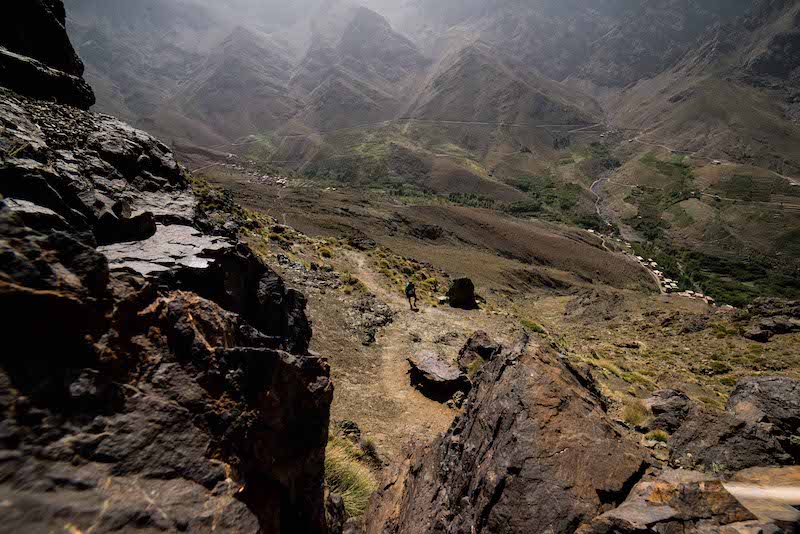
The conduction also permits both gain and loss of heat. The exchange happens in contact with a liquid or solid element. For example, when swimming, your whole body is in contact with water at a lower temperature than that of your body. There is a loss of temperature in the water, a loss that can be really important if cold water because of the exchange surface. Hence the importance of a wetsuit. The opposite example is if you put your hand on a hotplate, the heat gain is immediate.
Radiation also enables gains and losses of heat. All bodies radiate: the human body, the sun, the earth, plants, minerals… The heat exchange happens through receiving and emitting this radiation.
Evaporation allows only heat loss through elimination of the water in the body. Three different mechanisms allow evaporation:
- Exhalation of air transformed into water vapor when breathing
- Perspiration, which is the elimination of water from the surface or your skin without intervention of the sweat glands
- Sweating: the elimination of sweat consisting of water and minerals, produced in the sweat glands under your skin
At rest the endogenous heat, the heat produced by the body, comes only from basic metabolism and is evacuated by:
- Convection and radiation (75 %)
- evaporation (25 %) : 2/5 by breathing – 1/5 by perspiration + sweating
During an effort the endogenous heat can be considerably increased and is no longer produced only by the basic metabolism. The contraction of the muscles is largely responsible in the production of heat. The energy produced from carbohydrates and fats are transformed into:
- mechanical energy used for the physical effort : 25 %
- 75 % of this energy will be transformed into heat
This excess heat is largely evacuated by sweating (80%).
The beforementioned four regulating mechanisms allow heat exchange between the environment and the surface of your skin.
The endogenous heat being produced inside the body it needs to be transported to the skin surface. The blood circulation system transports this heat. The blood is always warm and allows transportation of the interior body heat towards periphery and vice versa.
Concerning the ‘noble’ organs (the brain, the heart, the lungs and the abdominal viscera), there is always a minimum quantity of blood circulating to bring them the necessary quantity to operate.
But for all other organs, the amount of blood coming through is regulated according to their activity:
- An increase when the organ is working to supply the necessary amount of oxygen to function
- It may decrease substantially when the organ is at rest
Thus, blood flow to the digestive system increases during digestion. Similarly, at exercise, muscle blood flow increases substantially.
These few notions on the distribution of the total blood volume have a direct impact on the thermal regulation that will be achieved largely thanks to the variations in blood volume of the subcutaneous vessels.
At rest, the volume of blood present in the subcutaneous vessels represents only 5% of the total blood volume.
In cold environments, the skin temperature is superior to the temperature of the environment. Therefore, the negative gradient between the skin and the environment contributes to a heat loss by convection and radiation.
Then there is a risk of a core temperature drop. But since humans are homeotherm, they need to maintain a constant core temperature.
How does the body react to prevent the core from cooling?
The caliber of the subcutaneous vessels will shrink: vasoconstriction. The blood ensures the transport of heat, vasoconstriction therefore leads to a reduction of the cutaneous blood volume and thus a limitation of heat losses. In addition, the blood that does not leave the subcutaneous tissues is redistributed to deep areas allowing the maintenance of the core temperature.
Thanks to its two adaptations we have:
- A cold surface
- A core with a constant temperature
In a warm environment, the skin temperature is lower than the temperature of the environment. There is therefore a temperature gradient between the skin and the environment that contributes to a heat gain by convection and radiation. There is then a risk of increasing the core temperature.
How does the body react to prevent the core from warming ?
The caliber of the subcutaneous vessels will increase vasodilation.
The cutaneous blood volume increases, allowing the excess heat from the core to be transported to the periphery to be eliminated by convection and radiation.
Often, convection and radiation are not enough to control the excess heat: evaporation begins.
Thanks to these two adaptions, we have:
- A warm surface
- A core with a constant temperature
The heat produced by the muscle contraction is superimposed on the effort in a warm environment, which constitutes a considerable excess of heat to be removed (75% of the energy produced for the contraction is transformed into heat).Sweating is therefore systematically put into predominant action (up to 80% of the elimination against less than 5% at rest).
Sweating in hot and humid conditions can only occur if there is a moisture gradient between the skin and the environment. During exercise, the moisture content of the skin is very high due to sweating.
If the air is dry, there is a sufficient gradient to remove water from the surface of the skin. On the other hand, if the air is wet (as in Hawaii), the difference between the moisture on the surface of the skin and the humidity of the ambient air is too small.
The water accumulated on the skin can no longer evaporate thereby preventing the elimination of excess heat. There is then a significant risk of
hyperthermia.
The first recommendation stemming from these physiological facts during the practice of a test in hot and humid environments is:
- Don’t soak yourself because you add water, that will heat up, to the skin’s surface, but on the other hand will prevent the elimination of sweat that you continue producing.
- But you need to mop yourself to remove water from the surface of the skin, allowing the sweat you continue to produce, to spread to the surface of the skin.
The second recommendation when participating in this kind of race is to rigorously ensure adequate hydration. In fact, sweat causes large losses of water up to 12 liters in 24 hours. It is crucial that these losses are compensated by an adequate hydrous intake.
In a case of insufficient hydration, the risks are multiple:
- Hyperthermia: your body is incapable of producing sweat, and hence to eliminate excess heat. The core temperature will rise and cause a malfunction of the internal thermostats
- Dehydration : major loss of water non-reconstituted, results in decreased total blood volume, this can cause cardio-vascular failure
Therefore, it is essential to hydrate yourself sufficiently, but remember the maximum capacity the stomach can absorb is 1l/hour, it is highly recommended to drink small quantities regularly.
Please note that the sensation of thirst is out of step with your hydration, when you begin to feel thirsty your body is already in a state of dehydration.
Recommendations regarding clothing :
- Choose ample clothing in order to promote heat loss by convention.
- Choose clothing in light colors to limit heat increase by radiation
These physiological facts also have an impact on how to manage food during long distance races. Please remember that whatever the activity level might be, the body permanently redistribute a minimum of its total blood volume to the noble organs.
Also bear in mind that in warm environments the blood volume in the sub-cutaneous tissue is greatly increased and that, when exercising, a large part of the total blood volume is redistributed to the muscles. However, the total blood volume in the body hardly varies between rest and effort. The result is a significant decrease in the blood volume distributed to other organs and especially to the digestive organs.
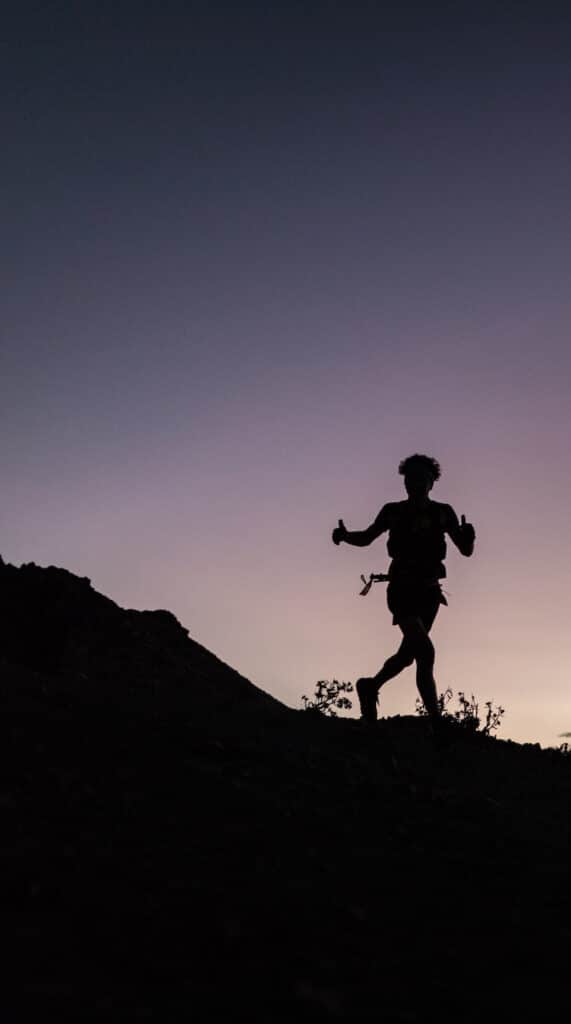
This hypoperfusion is responsible for a lack of oxygen in the digestive organs, causing digestive disorders you may find on long distance races. Hence the importance of continuing to eat throughout the race and thus stimulate a minimum of blood supply to the digestive tract.
Finally, the human body being full of resources, it is possible to gradually adapt the body to physical exercise in a warm environment: this is the phenomenon of acclimatization.
Repeated training sessions in a warm environment allows the implementation of cardo-vascular and sudoral adaptations.
HOW DO I PROCEED TO ACCLIMATIZE ?
A cardo-vascular adaptation is achieved by :
- A reduction in the amount of blood volume under the skin in favor of the muscles. The muscles will become more efficient because of a greater 02 intake.
- An increase of the total blood volume allows better heat removal by sweating.
- A decrease in the heart rate during exercise means saving energy and reducing heat production.
While adapting your sweating is due to :
- An increase in the capacity to sweat
- Shortening the time between the start of the exercise and the beginning of perspiration promotes a better heat elimination via sweating.
- A decrease in the loss of minerals limits the risks for dehydration.
Adaptations result in decreased body temperature and delay the onset of fatigue.
Cardiovascular adaptations take three to five days to achieve, while it takes minimum 10 days to obtain sweat adaptations.
To achieve acclimatization, you must reduce the intensity of your training sessions to 60-70% of your initial training program for around two weeks.
Thus, a running session of 1h30 initially scheduled at 145 bpm should be done around 100 bpm (70% of 145 bpm). Sessions should be divided according to their intensity. Sessions conducted at a high intensity (intervals, etc.) should be done in the morning when it is cooler.
Only the less intense sessions (endurance) should take place during the hottest part of the day. It is also important to take the heart rate into consideration (and not the speed) to establish the intensity of the sessions, since at the beginning of the acclimatization period the speed of the athlete will be lower than usual, for a given CF (cardiac frequency) range. Once the adaptation is in place the athlete will get back to the same level of performance for a given CF range.
To ensure efficiency a 15-day period of acclimatization in a warm and humid environment should be done during the last month preceding the race and include staying in a warm and humid environment the last week before the competition.
In fact, 50% of the gains obtained during the acclimatization period may disappear if the athlete leaves the warm environment.
The period of tapering (usually around seven days) should be reduced to five days. Indeed, during the tapering period, the gradual reduction in the training volume is responsible for a decrease in the total blood volume. It is therefore essential to reduce as much as possible this decrease of the blood volume
It is therefore essential to minimize this decrease in blood volume, since it could promote dehydration on race day.

